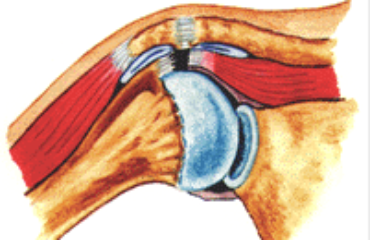Even the best orthopedic surgeon has patients who experience some knee instability after ACL surgery. Orthopedic medicine has long recognized four ligaments that cause the knee to operate properly. These ligaments often become damaged through trauma, with the ACL accounting for nearly 300,000 of these surgeries every year. However, while most of these surgeries are  resoundingly successful, there are still occasional situations in which the knee does not achieve full stabilization.
resoundingly successful, there are still occasional situations in which the knee does not achieve full stabilization.
Unnoticed Fibers
For nearly 150 years, the anterior cruciate, posterior cruciate, lateral collateral, and medial collateral ligaments have been the focus of treatment and therapies, including surgeries. However, there is a fibrous band that travels from the thigh bone to the shin. It was first noticed 130 years ago, and while the French surgeon who noticed it commented on it, he didn’t label and name the fibrous connection. He did state that this connecting material seemed to provide stability to the knee so that it wouldn’t buckle to the inside. Doctors in the decades following simply assumed that the band was part of other tissue.
Puzzling Developments
However, as knee surgeries became more and more sophisticated, the best orthopedic surgeons began to notice that some patients recovering from their knee surgery did not regain the expected stability. Dr. Steven Claes and his associates at the University Hospital Leuven began researching the situation several years ago. He began his search with the rationale that there simply must be some kind of tissue in the knee that would make it stable, and could be damaged when the ligaments were damaged. The studies conducted by his team determined that this “pearly” tissue previously thought to be the continuation of other fibers were, indeed, a separate tendon. This was in November of 2013.
Finally, this lowly yet crucial tendon received its own medical designation as the anterolateral ligament, or ALL. The Claes team suspects that part of the mystery surrounding the ALL is that it is often torn at the same time as the most common knee injury –  the ACL. If not treated soon after being torn, the ALL may wither and withdraw.
the ACL. If not treated soon after being torn, the ALL may wither and withdraw.
Moving Forward
The next step for the ALL is to determine the best treatment for rupture of this ligament. Since its function has just been discovered, orthopedic doctors and surgeons don’t know if it must be repaired through surgery, or if it will heal on its own. Indeed, the very fact that so many ACL surgeries are successful without previous understanding of the function of the ALL would indicate that the ALL is capable of healing itself. In cases in which the reconstructed knee does not regain stability after ACL surgery, it is suspected that the ALL has withered and is unable to repair itself.
Orthopedic surgeons already perform ligament transplants in reconstructing the knee, often using either autografts or allografts as the source of tissue for the transplant. It is unclear at this time if this is an option for damages to the ALL.

